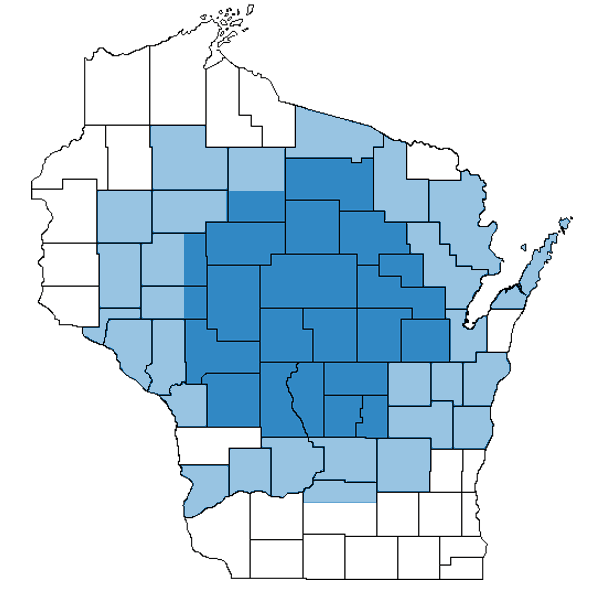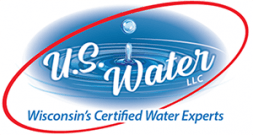Water Testing Services
Water Test Packages & Master List
Welcome to U.S. Water, Wisconsin’s trusted name for full-service water testing services. Proudly serving the majority of Wisconsin, U.S. Water is your dedicated partner in ensuring the safety and quality of your water supply.
Our state-of-the-art laboratory, certified by the state of Wisconsin, is one of the few in the region, ensuring accurate and reliable results.
When you have water concerns – whether it’s heavy metals, bacteria, or overall composition – having accurate test data will help you to make informed decisions about your water supply.
Tests can be scheduled individually, or you can choose from one of our Water Test Packages.
Our basic Water Analysis is free.
Choose U.S. Water for thorough and reliable water testing services you can trust. Your safety and peace of mind are our top priorities.
Master List of Water Testing Services
Water Test Packages
Annual Water Test Package
(Coliform, Nitrate)
Real Estate Package
(Arsenic, Coliform, Nitrate)
Primary Contaminants Package
(Antimony, Arsenic, Barium, Beryllium, Cadmium, Chromium, Copper, Lead, Mercury, Selenium, Thallium)
Secondary Contaminants Package
(Aluminum, Chloride, Copper, Fluoride, Iron, Manganese, pH, Silver, Sulfate, TDS, Zinc)
Comprehensive Metals Package
(Aluminum, Antimony, Arsenic, Barium, Beryllium, Cadmium, Chromium, Cobalt, Copper, Iron, Lead, Manganese, Mercury, Molybdenum, Nickel, Selenium, Silver, Thallium, Thorium, Uranium, Vanadium, Zinc)
Water Treatment Package
(pH, Alkalinity, Iron, Hardness, TDS)
Physical Properties
These factors are vital as they directly influence the overall quality, taste, and usability of your water. Understanding these properties helps us ensure that your water is not only safe but also meets the standards for optimal user experience.
| Alkalinity | Alkalinity quantifies water’s capability of neutralizing acids. |
| Conductivity | The presence of ions determines water's ability to conduct electricity. |
| Hardness | The presence of excess minerals in water, specifically calcium and magnesium, is referred to as "hardness." This will result in a build-up of "scale" that corrodes and damages plumbing. |
| pH | pH is an important measure when we talk about water quality. It helps us figure out the level of acidity or alkalinity in the water, based on how many H+ ions are there. The pH number tells us how strong the acid or base is in the water. |
| TDS | Water that has high Total Dissolved Solids (TDS) can cause problems for people using it. It might lead to unpleasant reactions in your body. High total dissolved solids can certainly make bathing less enjoyable. |
| Turbidity | Measure of water clarity. Caused by suspend matter, such as clay, silt, and organic matter. |
| Tannin | Tannins result from plant material decomposition, adding a yellow or brown hue and a subtle, earthy taste to water. Though generally not harmful, they impact water's appearance and taste. In addition, they may interact with disinfectants like chlorine, forming by-products that warrant attention. |
Heavy Metals
Having heavy metals in home water can pose significant health risks, including lead poisoning, learning disabilities, elevated cancer risk, and organ damage. Therefore, it’s important to treat for these substances, even when present in low concentrations.
| Arsenic | Naturally occurring with sulfide minerals (e.g. pyrite). Used in storage batteries, ammunition, pesticides, and wood preservatives. Severe poisoning at 100mg; chronic effects from accumulation at low intake levels. WI State Standard for Drinking Water: 10 µg/L | Test at least once; more often if well has tested positive.* |
| Chromium | Used in alloys, electroplating, and in pigments. Non-essential for plants. Carcinogenic via inhalation and are corrosive to tissues. Concentrations in drinking water are correlated to alkalinity and hardness (the softer the water, the less chromium). WI State Standard for Drinking Water: 100 µg/L | |
| Copper | Widely used in electrical wiring, roofing, alloys, cooking utensils, and piping. Corrosion of copper pipes may introduce measurable copper amounts into the water system. Considered and essential trace element. WI State Standard for Drinking Water: 1.3 mg/L. | |
| Iron | Naturally occurring (e.g. minerals: hematite, magnetite, taconite, and pyrite). Used in steel and other alloys. Elevated levels of iron in water can promote staining, taste, and color. U.S. EPA Secondary Drinking Water Standard: 0.3 mg/L. | |
| Lead | Used in batteries, ammunition, solder, piping, insecticides, and alloys. Lead in water supply may originate from industry, mining, or plumbing. Non-essential for plants and animals. Toxic by ingestion and cumulative poison. WI State Standard for Drinking Water: 15 µg/L. | |
| Manganese | Elevated levels cause black staining on plumbing, laundry, and cooking utensils. Essential trace element for plants and animals. WI Secondary Drinking Water Standard: 50 µg/L |
Less Common Metals
Aluminum
Antimony
Barium
Beryllium
Cadmium
Cobalt
Mercury
Molybdenum
Nickel
Selenium
Silver
Thallium
Thorium
Uranium
Vanadium
Zinc
Organic Tests
Organic compounds refer to a broad category of carbon-containing molecules that can enter water sources and potentially affect water quality. These compounds are derived from living organisms which occur naturally or from various human activities. Some are known to pose health risks.
| PFAS | PFAS are human-made chemicals that are known for their persistence in the environment and have been used in various industrial and consumer products. PFAS can contaminate water sources and cause potentially adverse health effects. The EPA is proposing individual MCLs of 4.0 nanograms per liter (ng/L) or parts per trillion (ppt) for PFOA and PFOS. | Test if well is in region with known PFAS contamination.** |
| Tannin | Tannins come from the decomposition of plant material. They can give water a yellow or brown color and may cause a faint, earthy taste. While tannins are generally not harmful, they can affect the water's appearance and taste. Additionally, they may react with certain disinfectants, like chlorine, forming by-products that could be of concern. | |
| Total organic Carbon (TOC) |
Inorganic Tests
Inorganic compounds that contaminate water refer to substances that lack carbon-hydrogen (C-H) bonds and are not from living organisms. They typically originate from geological processes, industrial discharges, and human activities.
| Chloride | While chloride is not typically harmful at normal levels, individuals with specific health conditions, such as hypertension or cardiovascular issues, may need to monitor their salt intake. In addition, elevated chloride levels can contribute to corrosion in metal pipes and fixtures. | |
| Chlorine | Used to destroy disease-producing microorganisms. Improves water quality with regards to ammonia, iron, manganese, sulfide, and organic substances. Too high of concentrations affect taste and odor. | |
| Fluoride | Both naturally occurring and added at controlled amounts. WI State Standard for Drinking Water: 4 mg/L. | |
| Nitrate | Excessive amounts in drinking water can lead to methemoglobinemia (blue baby syndrome) in infants. WI State Standard for Drinking Water: 10 µg/L prevents methemoglobinemia from occurring. | Test annually or if the well will be used by a pregnant woman. * |
| Nitrite | Intermediate oxidation state of nitrogen and reduces to nitrate. WI State Standard for Drinking Water: 1 mg/L. | |
| Nitrate + Nitrite | ||
| Sulfate | Widely distributed in nature. In the presence of organic material, certain bacteria will become active. | |
| Total Phosphorus | While phosphorus isn’t directly harmful to human health in water, its presence can foster the growth of harmful microorganisms. Although it can be beneficial in some uses, high levels may pose risks. | |
| Silica | While silica is not harmful to human health, high concentrations of dissolved silica can contribute to the formation of scale in water systems, such as pipes and appliances. |
Bacteria Tests
Bacterial contamination in water refers to the presence of harmful bacteria or microorganisms that can pose health risks to humans when the water is consumed or comes into contact with the skin. They can originate from various sources, including untreated sewage, agricultural runoff, animal waste, and human activities. Coliform bacteria, including E. coli, are often used as indicators of fecal contamination. Addressing bacterial contamination involves a combination of preventive measures, routine testing, and appropriate water treatment.
| Coliform & E.coli | Coliform bacteria (total coliform) are considered indicators for fecal contamination, pathogenic and opportunistic pathogenic bacteria, and possible inadequate sanitation. | Test annually or if you notice a change in your water.* |
| Iron Bacteria | While iron bacteria themselves are not typically a health risk, they can create an environment conducive to the growth of harmful bacteria, which may result in waterborne illnesses. In addition, they can create biofilms that accumulate in water pipes and lead to reduced water flow. | |
| Legionella | Legionnaires’ disease is a severe form of pneumonia typically caused by the bacterium, Legionella, which has also been linked to Pontiac Fever. | |
| Pseudomonas | Pseudomonas bacteria can be found in a number of different areas – including moist areas like pools and hot tubs and healthcare facilities like hospitals. The bacteria can lead to infection on anywhere on your body and can result in serious health issues. | |
| Sulfate Bacteria |

Areas We Serve
Our dedicated lab technicians personally collect water samples for testing at your location, ensuring accurate results and timely delivery to the lab.
Dark blue areas = we regularly perform onsite sampling
Light blue areas = we conduct less frequent onsite water testing. Please call for upcoming testing dates or opt for the convenience of a water sampling kit delivered to your doorstep.
White areas = please call for a testing kit and instructions
Please click below for a complete list of our core onsite service cities.
| Abbotsford Adams Alma Center Almond Amherst Amherst Junction Aniwa Antigo Appleton Arkdale Arpin Athens Auburndale Babcock Bancroft Bear Creek Berlin Big Falls Birnamwood Black Creek Black River Falls Blenker Bloomer Bonduel Bowler Boyd Briggsville Brokaw Bryant Cadott Camp Douglas Caroline Cecil Chili Chippewa Falls Clintonville Colby Coloma Combined Locks Cornell Curtiss Custer Dale Dalton Deerbrook Dorchester | Edgar Eland Elcho Elderon Elroy Elton Embarrass Endeavor Fairchild Freedom Fremont Friendship Gilman Gleason Grand Marsh Granton Green Lake Green Valley Greenville Greenwood Gresham Hancock Harshaw Hatley Hazelhurst Heafford Junction Hewitt Hixton Holcombe Hortonville Humbird Hustler Iola Irma Jim Falls Junction City Kaukauna Keshena Kimberly King Kingston Krakow Lake Tomahawk Leopolis Little Chute Loyal Lublin Lyndon Station | Manawa Marathon Marion Markesan Marquette Marshfield Mather Mattoon Mauston McNaughton Medford Melrose Merrill Merrillan Milladore Millston Minocqua Montello Mosinee Necedah Neillsville Nekoosa Nelsonville Neopit Neshkoro New Auburn New Lisbon New London Nichols Ogdensburg Oneida Owen Oxford Packwaukee Pearson Pelican Lake Phlox Pickerel Pine River Pittsville Plainfield Plover Port Edwards Poy Sippi Princeton Pulaski Readfield | Redgranite Rhinelander Rib Lake Ringle Rosholt Rothschild Rudolph Saxeville Scandinavia Schofield Seymour Shawano Sheldon Shiocton Spencer Stanley Stetsonville Stevens Point Stratford Summit Lake Taylor Thorp Three Lakes Tigerton Tilleda Tomahawk Tripoli Union Center Unity Vesper Warrens Waupaca Wausau Wautoma Westboro Westfield Weyauwega White Lake Wild Rose Willard Wisconsin Dells Wisconsin Rapids Withee Wittenberg Wonewoc |

At U.S. Water, we are committed to delivering solutions that not only meet but exceed your expectations. Our Wisconsin state-certified laboratory ensures timely and accurate water testing.
*Source: Wisconsin Department of Natural Resources
**Source: The United States Environmental Protection Agency
